Last year when I posted about the Georgia Pottery Invitational Perspectives show, I readily admitted knowing very little about pottery (see my post Event Expands Pottery Proficiency). Since then I‘ve participated in studio tours, talked to potters, researched online and attended a weeklong pottery class at the John C Campbell Folk School (see Center, Open, Pull). I’ve learned a great deal about pottery but I still have a lot more to learn.
This year’s 2019 Perspectives show, held in Watkinsville Georgia and hosted by the Oconee Cultural Arts Foundation (OCAF), was packed with outstanding work. The majority of the 50 functional potters also participated last year but there were 5 new potters added. Potters have told me it’s considered an honor to be selected for this prestigious event. Congrats to all the participating potters!
From a viewer’s perspective, it doesn’t get much better than this. Viewers can take their time to appreciate the participating potters’ work in the Main Gallery, study and admire the pottery in the featured exhibits, and choose from the 6000+ pieces in the pottery sale.

Some of the things that I just took for granted last year, such as perfect symmetry, thin walls and seamless handles, made me stop and take notice this year. Potters of this caliber wouldn’t have any difficulty with these basics but I know from hands-on experience that it takes skill and lots of practice to master these details.
The pottery class I took was throwing clay on the potter’s wheel. But I also had the opportunity to dabble a little with hand building. It was fun to look at a piece of pottery at the Show and be able to identify which technique(s) was used. For instance, this gorgeous mug was thrown by Rob Sutherland and decorated by Jessica Sutherland.
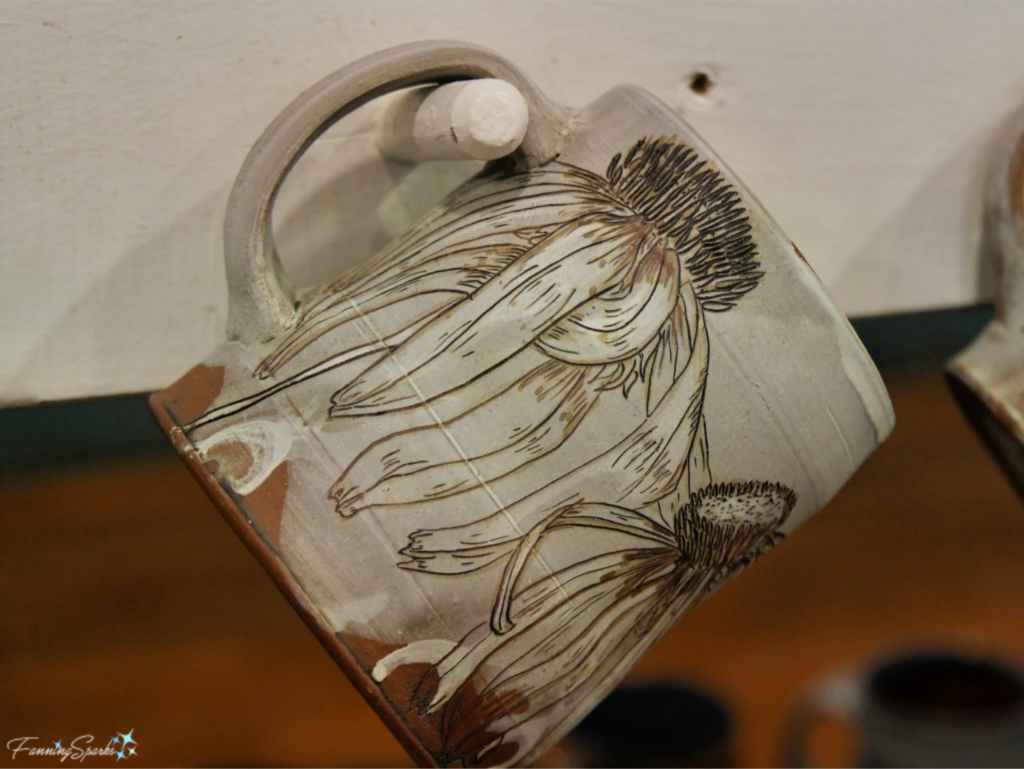
This stoneware piece, called “Arctic Ark”, by Barry Gregg was hand built.
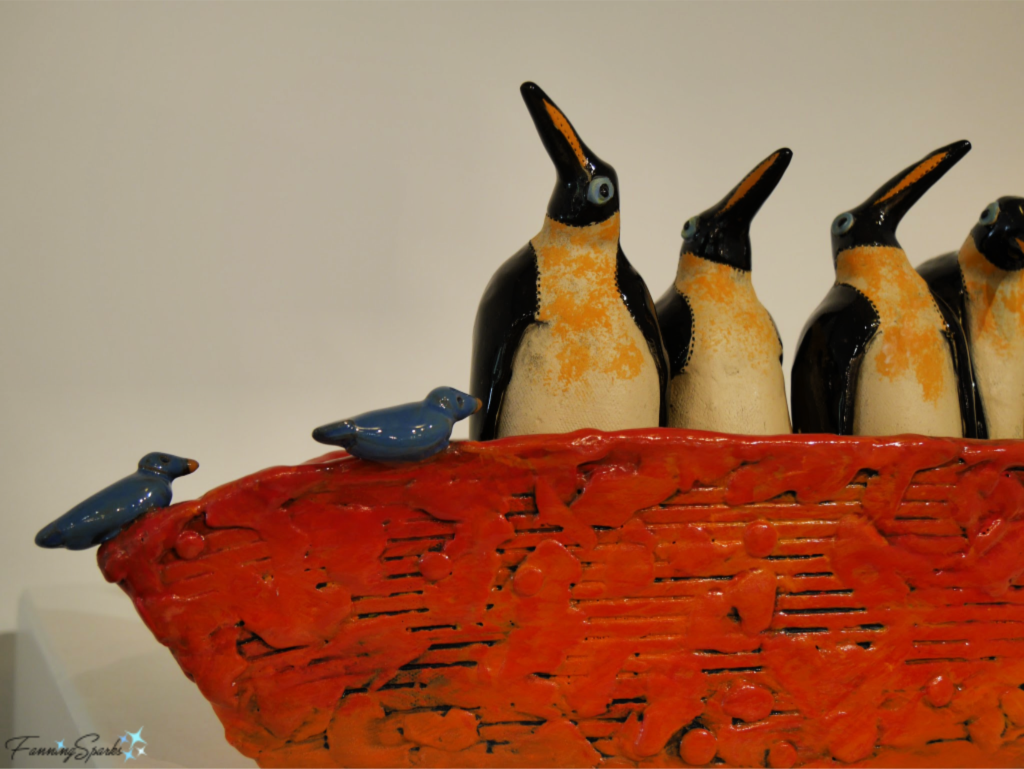
Some of the most interesting, and I assume challenging, work was a combination of techniques-hand building and throwing in a single piece. Here’s an example of 3 beautiful contemporary vases by Austin Lindsey.
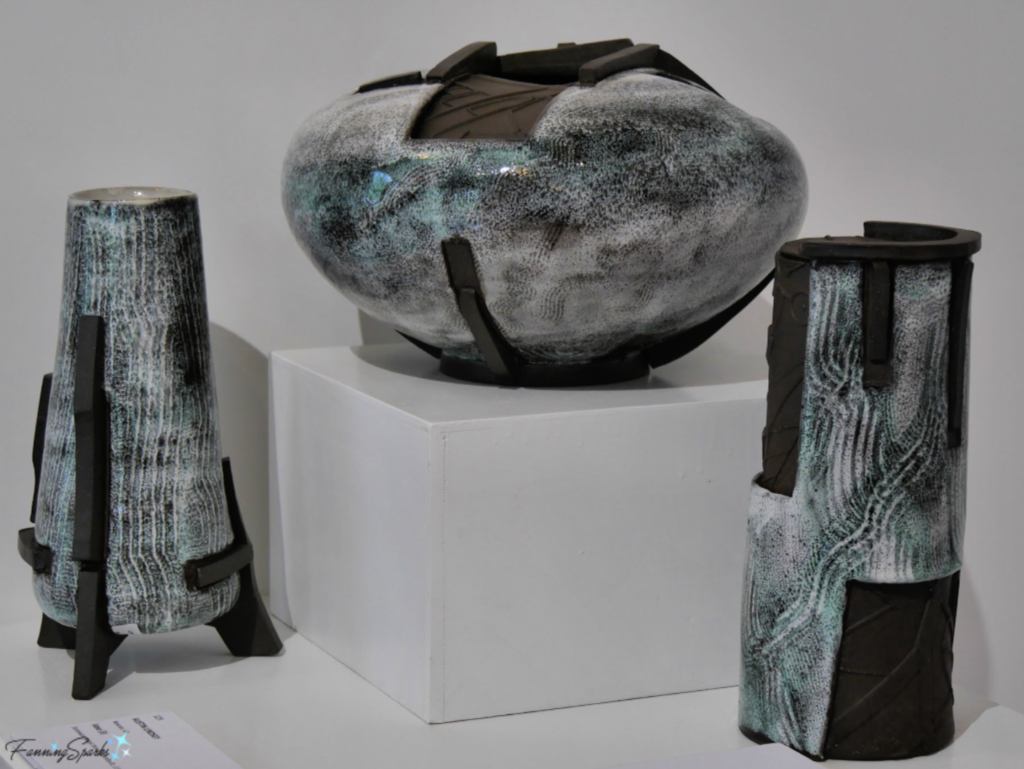
Rob Sutherland, Perspectives participating potter and owner of Good Dirt Clay Studio in Athens, hosted this year’s Gallery Talk. Rob explained how he looks for “evidence of process” when viewing pottery. He called out several examples in the Main Gallery including these porcelain cups in this beer flight by Kathy Murphy. Thanks for a great tour Rob!
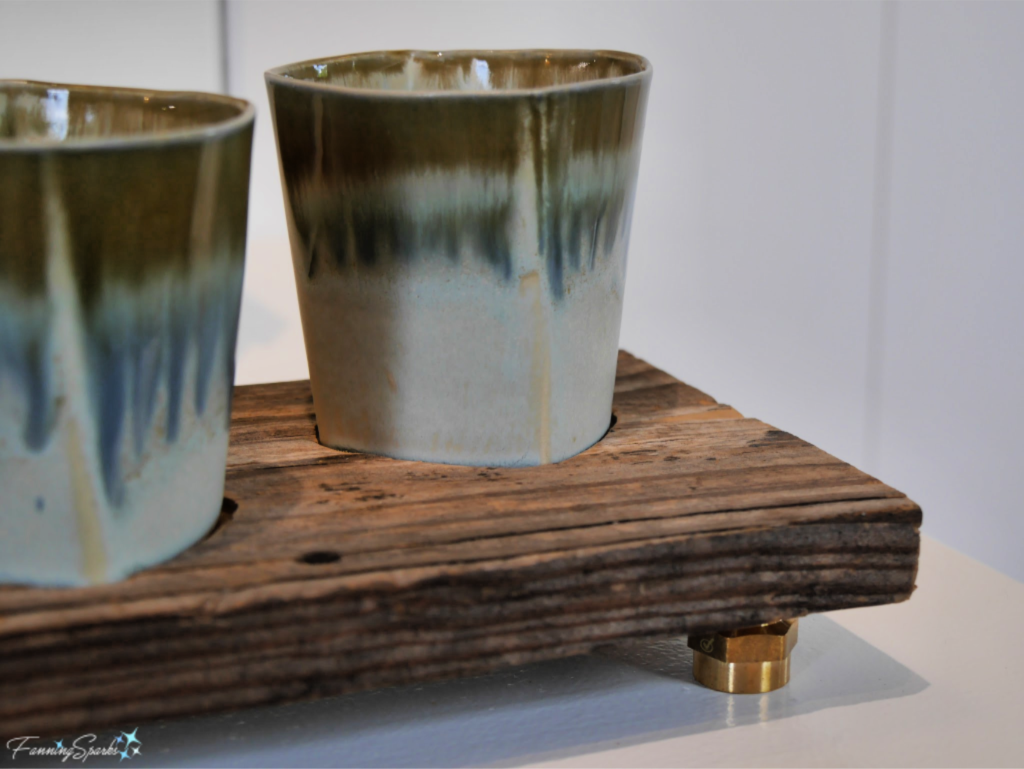
Some say pottery is all about form and surface. This is a helpful lens through which to view a potter’s work. Here are some examples that caught my eye. This vessel by Bertha Escoto has an unusual and pleasing form.

The unique pottery of Beth Tarkington was featured in the Hall Gallery. As noted in the program “Her surface work is painterly. Involving layering of slips, stains, underglazes, oxides and glaze through processes of wax-resist, texturing, carving, painting, slip trail and brushwork”. This energetic piece is called “We Each Wear It a Little Differently”.
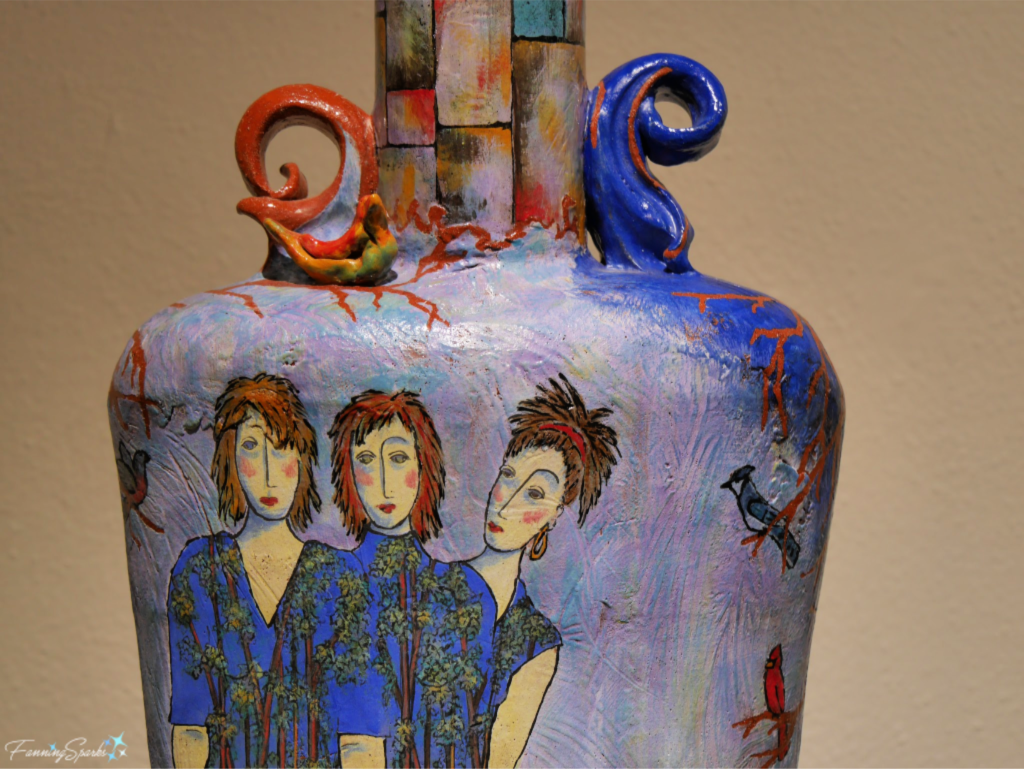
Of course, combining form and surface in the service of a function makes it even more interesting. Take this teapot, called “Blueberries: Teapot” by Sandy Culp, for instance. Yes, it’s an actual teapot! You open it by lifting the center leaf and pour through the stem. Granted, you’d probably never actually steep tea in it but isn’t it amazing?
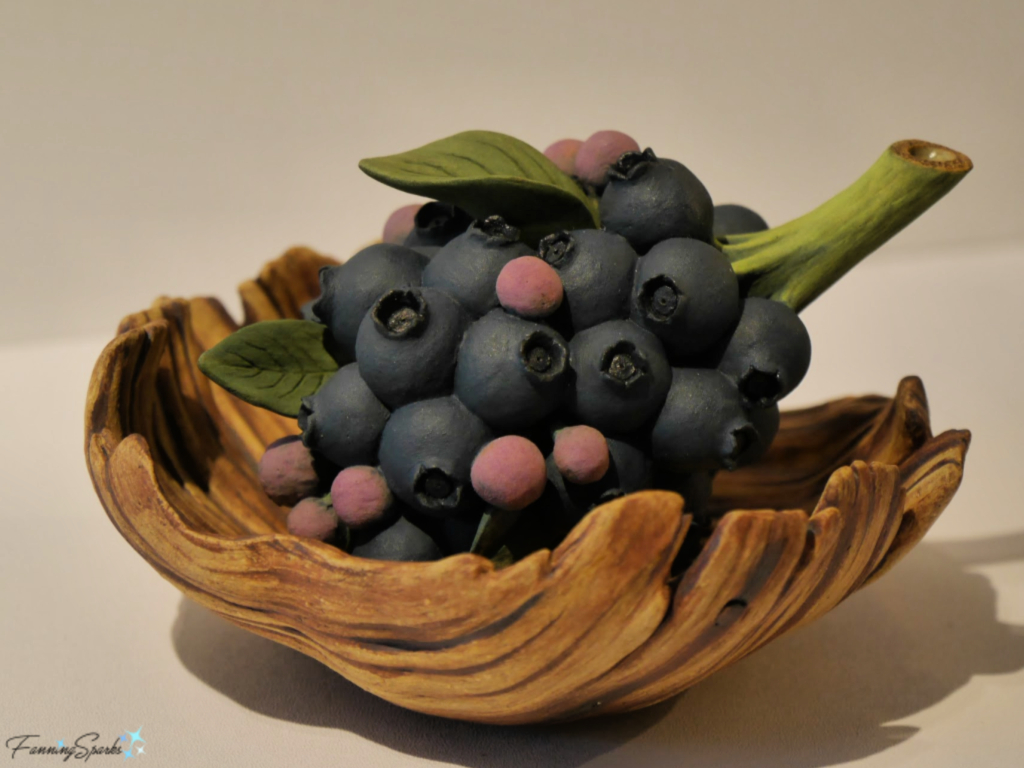
Here’s another example of an unusual teapot. This is “Blue House Teapot (Orange Circle)” by Glenn Dair. It was constructed from slab construction.
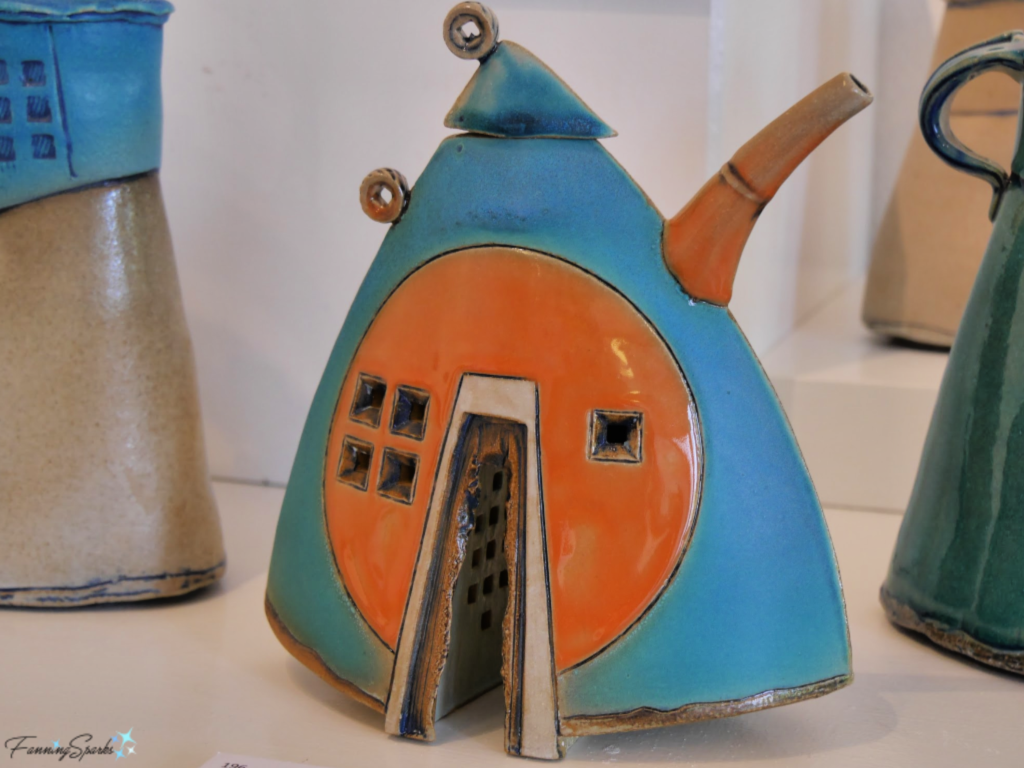
While teapots seem to be a favorite, pottery can serve many functions. There are bottles, bowls, cruets, cups, mugs, teabowls, teapots, jugs, pouring pots, lidded containers, platters, plates, vases, vessels and so on. Here’s a colorful and lively small pitcher by Barry Gregg.
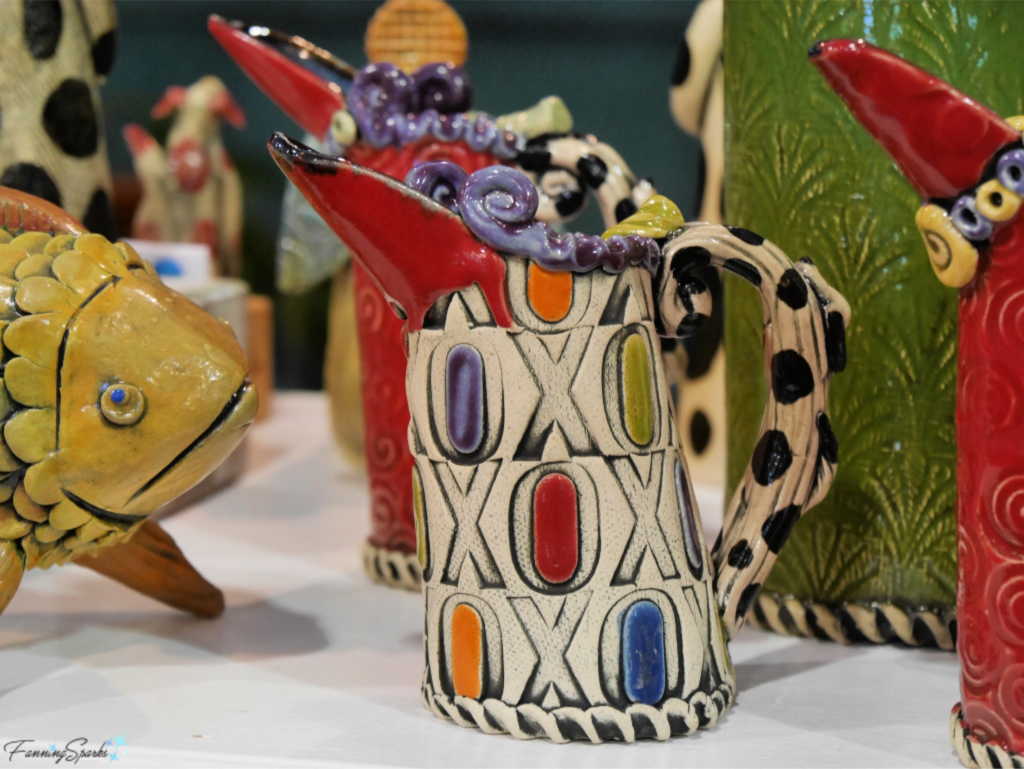
Pottery can, also, serve to add beauty and interest without being functional. There are figurative and abstract sculptures, forms and panels. Here’s a closeup from Kathy King’s multi-piece wall art called “Do the Walk of Life”.
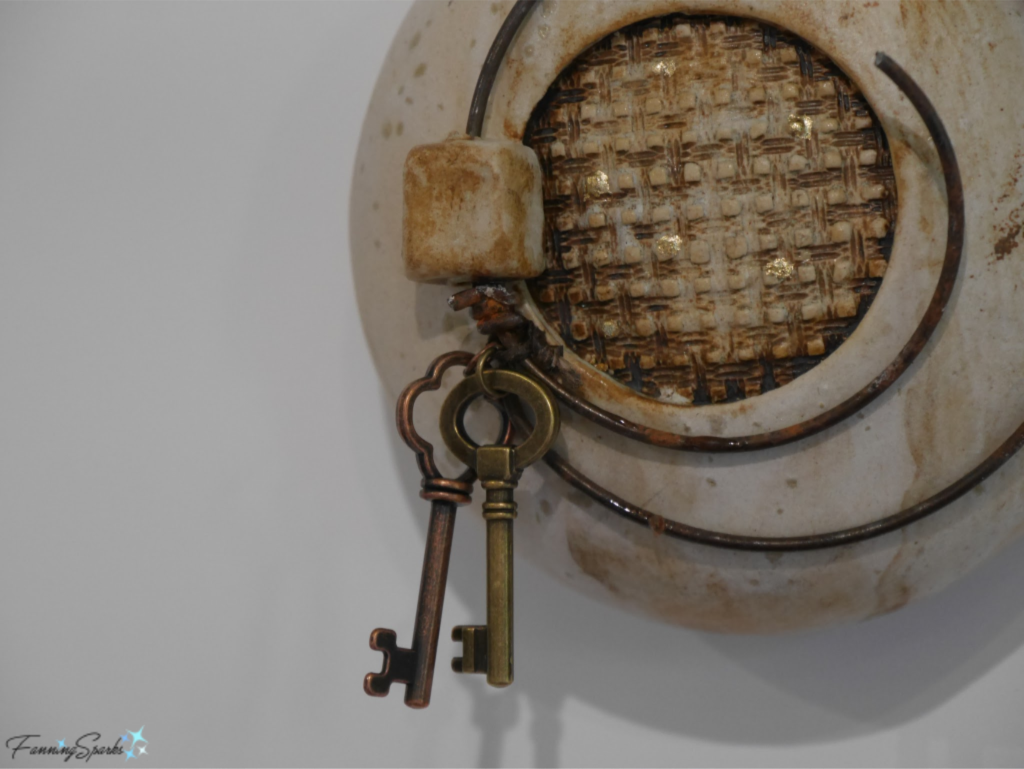
Last year, I fell for Michael Klapthor’s old-timey robots. I was equally enthralled with these charming fellows this year-especially after following him on Instagram to see what’s involved in his process. This is “Analytic Robot – PWL-118”. It’s hard to gauge size from this photo but this guy is over 4 feet tall.
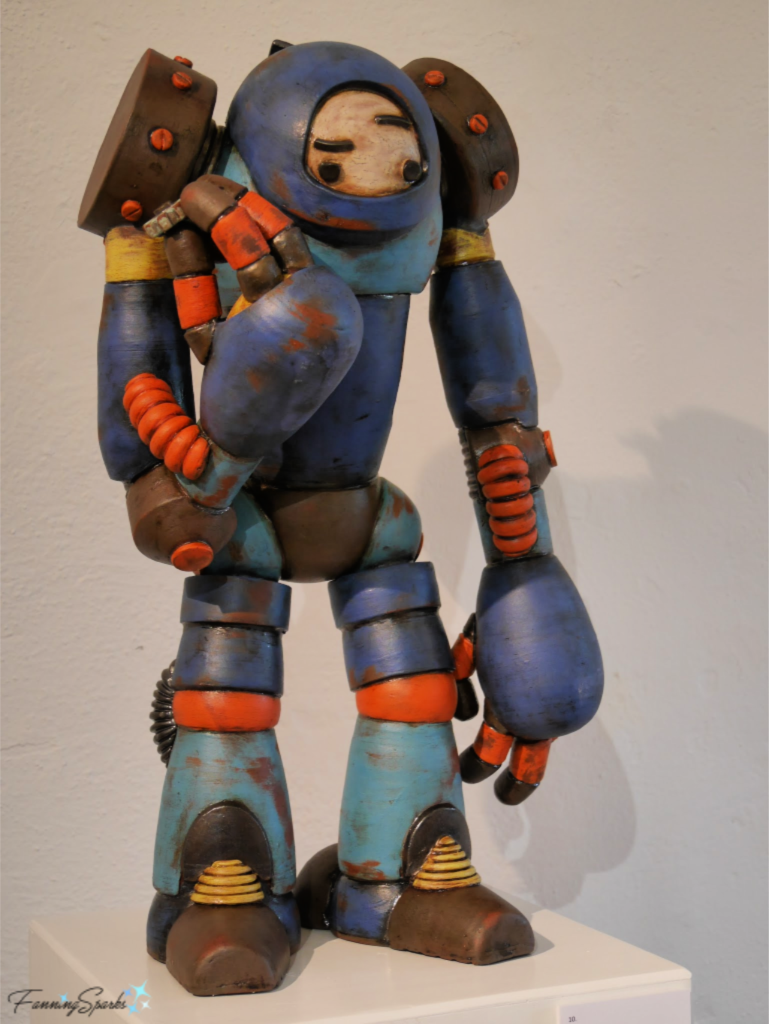
Another potter that captured my attention is Keok Lim. Her porcelain pieces are very detailed, colorful and whimsical. This piece, “Colorful Dreams”, would have to be my favorite piece in the show this year. It’s just so joyful!

How could you not smile every time you looked at her?
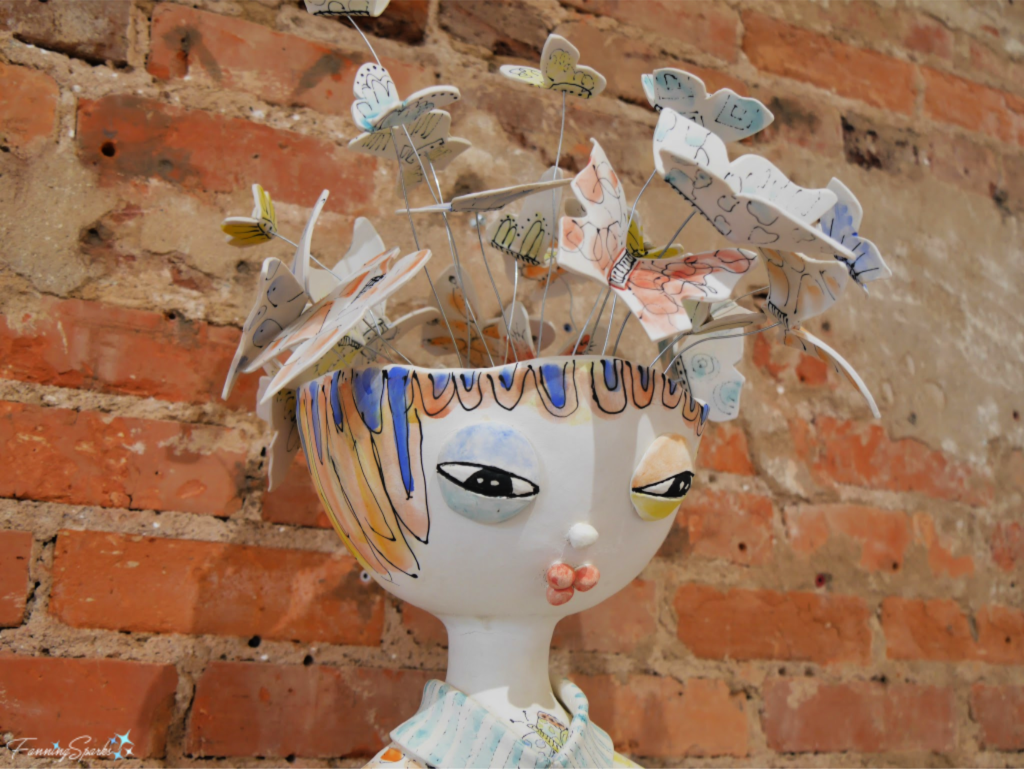
More Info
You can learn more about the Oconee Cultural Arts Foundation (OCAF) on their website. They host the Perspectives Georgia Pottery Invitational event every year in late August/early September. Here’s the link to my post Event Expands Pottery Proficiency from the 2018 event.
You can learn more about Rob Sutherland, who hosted the Gallery Talk, and his work and studio on the Good Dirt Clay Studio website.
Here’s the link to Michael Kapthor on Instagram.
Several of the artists in the show are members of the Athens Area Potters group. Their website showcases the potters and their studios. It also announces local events such as studio tours and pottery sales.
Today’s Takeaways
1. Well-executed evidence of process sets apart handmade work.
2. Consider the process(es) used when admiring artwork.
3. When creating your own art work, remember evidence of process is an asset.


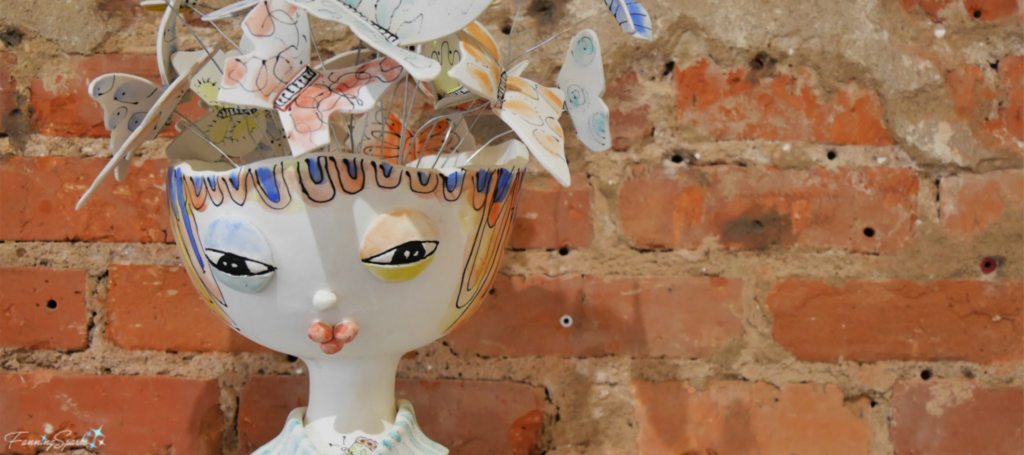


Comments are closed.